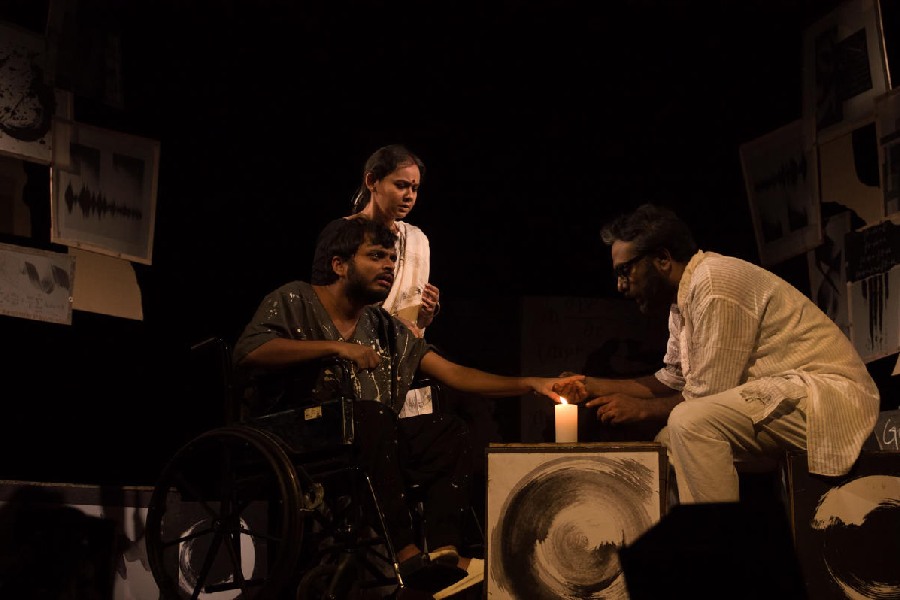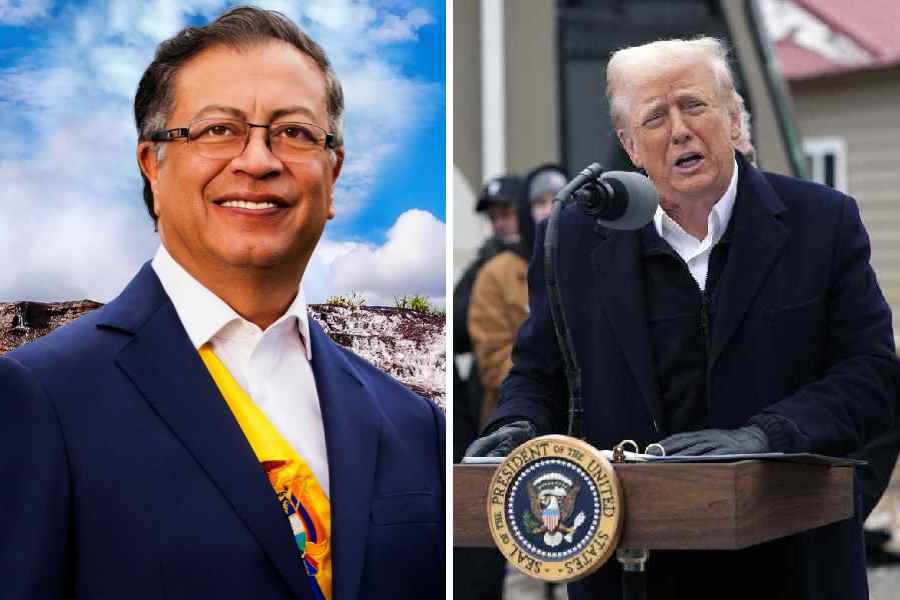Oftentimes, the poetry in poetic drama remains contained within the written word, with the staged performance bearing hardly any trace of it. Amar Gaan, written and directed by Suman Sengupta and produced by Chetla Krishti Samsad, is a glorious exception to this rather sad phenomenon. If as the playwright, Sengupta has
packed Amar Gaan with poetry, then as the director, he has ensured that poetry seeps deep into the matrix of the performance. He has meticulously designed every performative component such as set, light, costume, overall colour palette, background score and, of course, acting to extricate from each component its maximum poetic effect. Therefore, everything in the play speaks the language of suggestion, signalling plenty through minimal signs. The set with the installation-like assemblage of abstract forms and images, the predominantly white-hued light scheme with touches of blue and yellow, and the hauntingly soulful soundscape allow abundant freedom for meaning-making — in the manner of poetry of a high order. From beginning to end, Amar Gaan demands and extracts from the audience a vital interpretative association, thereby empowering it with a quantum of agency that the run-of-the-mill, tell-all play routinely denies.
The plot is wafer-thin, negligible and, liberated as it is of the burden to tell a story, the play takes free flight on the wings of ideas such as the eternal human quest for knowledge, the boundlessness of human imagination, the quintessential human urge to transgress limitations. Not surprisingly, the play is steeped in Rabindranath Tagore’s philosophical understanding of the human condition and, thus, bits of Tagore’s writings and snatches of his songs are foundational to the play’s ideological structure. All the actors perform with a sensitive understanding of their roles which is particularly creditable given the complexity of the text. Sayantan, Mayukh, Monjima, Piyali and Arka are fabulous, with Proshanto, Aihik, Srijani and Artiro ably supporting them. The solar eclipse-diamond ring sequence is a theatrical moment of rare genius in terms of conception and execution.











